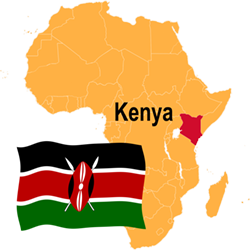 After Kenya recorded its initial known case of COVID-19, the government issued a Presidential Order on COVID-19 on 15 March 2020. This put in place multiple measures and response activities including:
After Kenya recorded its initial known case of COVID-19, the government issued a Presidential Order on COVID-19 on 15 March 2020. This put in place multiple measures and response activities including:
- Ban on air travel: Ban was imposed for all incoming flights into and within the country. Only Kenyan citizens and foreigners with valid residence permits were allowed into the country, with the returning passengers placed into mandatory quarantine for 14 days. Local air travel and international air travel were eventually resumed.
- Imposition of a nationwide curfew: The initial curfew (from 7 p.m. to 5 a.m.) was put in place in March 2020, with adjusted curfew hours remaining for some time.
- Cessation of movement: The initial cessation of movement into and out of disease infected counties was instituted for the larger Nairobi Metropolitan area in April 2020. This was extended to other counties (e.g., Mombasa, Kwale), and later lifted as the first wave of cases eased. However, in response to the third wave of rising cases of COVID-19, there was another cessation of movement in and out of five counties deemed disease-infected areas on 26 March 2021; and that was lifted on 1 May 2021.
- Prohibition of social gathering: The Government banned public gathering and meetings, including at places of worship initially. This was followed by a prohibition of all forms of gathering (especially political rallies) on 12 March 2021 in response to the third wave of increases in new cases.
- Closure of all primary and secondary schools: This began on 18 March 2020, followed by closure of tertiary learning institutions beginning 20 March 2020. There was a partial reopening of schools in October 2020, followed by full reopening of schools after the festive season on 4 January 2021.
- Reducing the number of passengers in public transport: The carrying capacity of public service vehicles was limited to only 60 percent.
- COVID-19 vaccination: As supplies became available, Kenya launched initial vaccinations on 5 March 2021. This was rolled out for the population starting with the priority groups – frontline health care workers, uniformed officers, teaching staff, religious leaders, and citizens above 58 years. Distribution of vaccines was through the 47 County Departments of Health.
- Risk Communication and Community Engagement (RCCE) activities: These included rolling out the national Communication and Community Engagement strategy at the county level. The national campaign on COVID-19 prevention dubbed ‘Komesha Korona’ was implemented. This included efforts to promote key COVID-19 preventative measures through various media – such as radio, TV spots, posters, and social media (e.g., Twitter, Facebook).
[SOURCE: Kenya’s Experience: Factors Enabling and Impeding the COVID-19 Response. Mwakisha et al., Health Promotion Practice, 2023, https://doi.org/10.1177/15248399221117566 ]